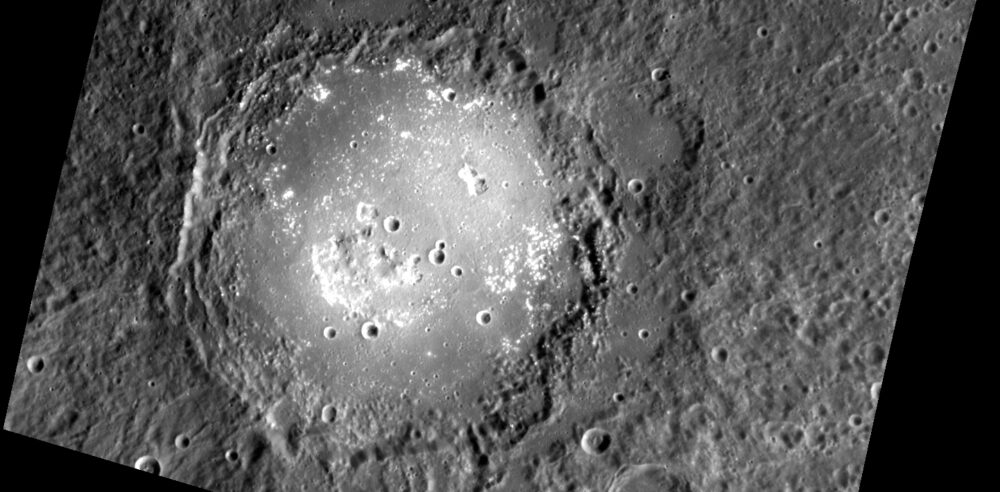Abstract
The detection of pyroclastic deposits on Mercury provides the unexpected evidence for the existence of volatiles in the planet, as these volatiles were required to drive the explosive paroxysm of magma particles. Pyroclastic deposits on Mercury have a higher albedo and a redder spectral slope than the surrounding terrains [1,2], with a drop in reflectance in the UV spectral range [3]. More than 200 pyroclastic deposits were found on Mercury [2,4,5,6,7] and our recent approach allowed the identification of potential new candidates [8,9]. Despite their importance for understanding the interior evolution of Mercury, many open questions still remain, including their mineralogical composition, granulometry, age, evolution and the nature of the volcanic gases responsible for the eruptions. The investigation of pyroclastic deposits is a critical tool for determining the magma’s composition, and to understand the thermal evolution of Mercury. The proposed ISSI project will execute an in-depth analysis of pyroclastic deposits by combining morphological, topographical, spectral, and elemental examinations using data from several instrument onboard the MESSENGER spacecraft [10], i.e. images from MDIS, spectra from MASCS, and topographical data from MLA. The remote-sensing data analysis will be applied both on pyroclastic deposits identified in the literature and on the new potential candidates and will be supported by laboratory experiments and spectral modelling in order to assess the mineralogical composition, physical properties, origin and evolution of the explosive eruptions on Mercury. Such an effort will be addressed by an international team hosted by ISSI, with interdisciplinary expertise in remote-sensing imaging spectroscopy, volcanism, laboratory spectroscopy and modelling, morphology and topography. The results of the analysis proposed in this project will reveal potential targets for a detailed examination by future ESA/JAXA BepiColombo mission. Indeed, the synergistic approach proposed in this study will be an important input for the implementation of high-quality observations performed by the instruments onboard BepiColombo, that will study Mercury beginning in 2026. The team involves members with a broad knowledge of Mercury and the MESSENGER dataset, who are part of the BepiColombo team, and some of them have direct access to laboratory facilities. These capabilities are a strong asset for the achievement of the purposes and for the exploitation of the data.
Summary of the project outcomes
The 3 hermean faculae investigated are: Orm Faculae, Agwo Facula and the facula in Picasso crater, whose name “Serp Facula” was proposed to IAU and accepted. These faculae show a compound vent and the same low degradation stage.
A photometric correction specifically tailored for pyroclastic deposits was applied to MDIS/WAC cubes to remove the effects of topography from the spectra. A spectrophotometric analysis was applied on both MASCS data (whose footprints were recalculated) and MDIS data. In the first case, the surface roughness of the vent is not well represented by Hapke global parameters (conversely to Mercury’s surface). In fact, results from MDIS data suggest that faculae are rougher than the surrounding terrain.
The spectral investigation of the photometrically corrected MDIS cubes defined the extent of the faculae (23 km,18 km and 42 km for Agwo Facula, Orm Faculae NE and Serp Facula, respectively) and the symmetric/asymmetric distribution of pyroclastic deposits. The spectral variations in the vent of faculae suggest a vertical heterogeneity in the crustal composition (deeper layers are richer in C) or a progressive mixing with the surrounding terrain. The photoclinometry-derived topography products relate the spectrally dark area inside the vent of Agwo Facula (richer in C) to a depressed region, and the high-resolution geological map highlights a rougher surface for this younger pit. A recently exposed hollow-like material occurs in the vent of the faculae, supported by spectral and topographical investigation, and the high-resolution geological maps.
UV-to-MIR reflectance spectra of 3 endmembers and mixtures at different grain sizes were acquired in the laboratory. The endmembers are: graphite, CaS and a 70:30 norite-glass mixture (the mafic component). The binary mixtures are: mafic component and graphite (C:1%,2%,3%,4%,5%,10%); mafic component and sulphide (CaS:5%,10%,15%,20%,25%,30%). The reflectance decreases with a higher amount of graphite and increases with CaS. Space Weathering effects on Mercury were mimicked by simulating (with Bruggeman model) the occurrence of nanophase carbon particles on norite-glass mixture, producing darker, redder and featureless spectra, similar to Mercury’s ones.
An absorption feature at 830 nm was detected in freshly exposed material in the Praxiteles basin (hosting Orm Faculae), ascribed to Fe-rich minerals.

